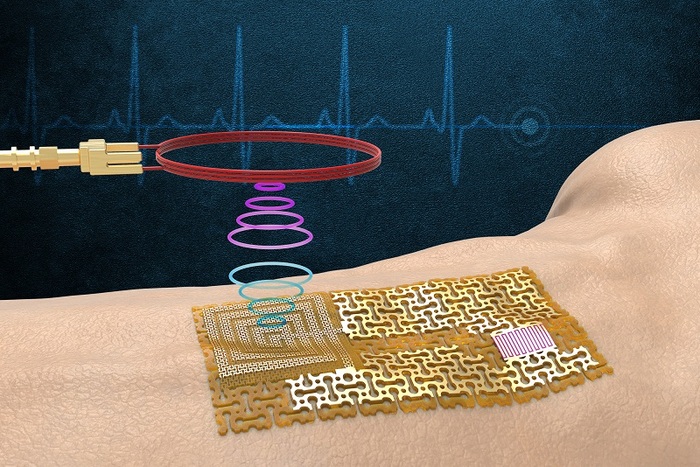Born less than 20 years ago for robots,
electronic skin
today evolves and becomes
wireless
, paving the way for a new generation of
wearable technologies
useful for
health
and
sport
.
The result, published in the journal Science, is due to researchers at the Massachusetts Institute of Technology (MIT), who have developed an 'e-skin' capable of detecting and transmitting signals relating to
pulsations
,
sweating
and
exposure to ultraviolet rays
without using chip for Bluetooth connection or bulky batteries.
The new electronic skin is a
flexible semiconductor film
that
adheres to the skin like a patch
.
The 'heart' of the sensor is an ultra-thin layer
of gallium nitride
, a material known for its piezoelectric properties (it can produce an electrical signal in response to mechanical deformation and, conversely, it can vibrate mechanically in response to an electrical impulse).
Specifically, the researchers produced samples of pure gallium nitride and coupled them with a
conductive layer of gold
to enhance the electrical input and output signals.
They then showed that the device is sensitive enough to
vibrate
in response to the
heartbeat
and to the
salts present in the sweat
: the vibration of the material then generates electrical signals that can be read by a receiver placed nearby.
This 'e-skin' "can be applied to the body like a bandage and, coupled with a
wireless reader on the smartphone
, allows you to monitor heart rate, sweating and other biological signals," notes MIT engineer Jeehwan Kim.
Probably this scenario still looked like science fiction in the eighties, when the
first research
on electronic skin began, and perhaps even in the early 2000s, when the prototypes took shape.
The first electronic skin that is perfectly
flexible
and capable of perceiving pressure and temperature
dates back to
2005 : developed at the University of Tokyo, it had a double network of sensors to give the automata a perception similar to touch.
Just
three years later , at the University of Illinois, an
adhesive
e-skin was developed
which, applied to the skin like a tattoo, was able to restore tactile sensations to those who had lost them or to monitor parameters such as those relating to the functioning of the heart.
On the spur of a growing environmental sensitivity, in
2018
even the first completely recyclable electronic skin arrived, capable of
repairing itself
like that of Terminator and elastic like that of humans.
Shortly after it was the turn of the e-skin able to feel the heat, the cold and the humidity: a turning point for the touch of the robots but also for the prosthetic limbs.
In 2020, in the laboratories of Rmit University in Melbourne, the first electronic skin was created that senses pain by reacting almost instantly, just like our natural skin does: useful for robots and prostheses, it is a candidate to become a hitech alternative. to transplant skin grafts.
Finally, in 2021 the MIT researchers developed the first e-skin
with pores
, capable of adhering better to the human body for the detection of parameters even when you sweat during sport.

